Albay is known for its lush green environment and diverse wildlife. One of the most remarkable features of the region is its wide range of avian species.
With over 150 species of birds, Albay is home to some of the most beautiful and unique birds in the world. From endemic species like the Philippine Hawk-owl to the majestic Philippine Eagle, Albay is a paradise for birdwatchers and wildlife enthusiasts.
Whether you’re a beginner or an expert, you’ll find something to explore in Albay. From the tropical forests of Mayon Volcano to the wetlands of Sorsogon Bay, Albay is a bird-lovers paradise. So come and explore the wonders of birds in Albay!
1. Philippine Cuckoo-Dove
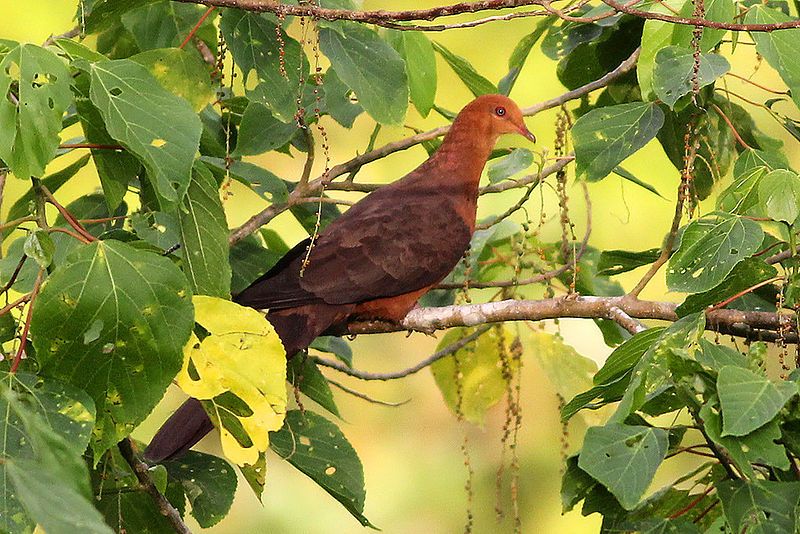
The Philippine cuckoo-dove is a species of bird belonging to the family Columbidae. It is native to the Philippines and Taiwan and is considered to be a species of least concern on the International Union for Conservation of Nature Red List of Endangered Species.
This means that it is not currently facing a major threat of extinction and its population is relatively stable. The Philippine cuckoo-dove is a medium-sized bird, typically measuring between 23-27 cm in length.
It has a brown upper body and greyish-brown lower body, with a black tail and a white patch on its wings. Its main habitat is tropical and subtropical moist lowland forests, but it can also be found in secondary growth, cultivated areas, and shrubland.
Its diet consists of fruits, seeds, and arthropods. The Philippine cuckoo-dove is considered to be a species of least concern due to its large range, abundant population, and tolerance of a degree of habitat fragmentation.
However, it is still threatened by the destruction of its natural habitat due to deforestation and agricultural expansion. In addition, it is hunted in some locations for food. Because of this, it is important to take steps to protect the Philippine cuckoo-dove and its habitat.
This includes limiting hunting, preventing deforestation and habitat destruction, and establishing protected areas for the species. With these measures in place, this species can continue to thrive in the wild for many years to come.
| Kingdom | Animalia |
| Phylum | Chordata |
| Class | Aves |
| Order | Columbiformes |
| Family | Columbidae |
| Genus | Macropygia |
| Species | M. tenuirostris |
2. Spotted Dove
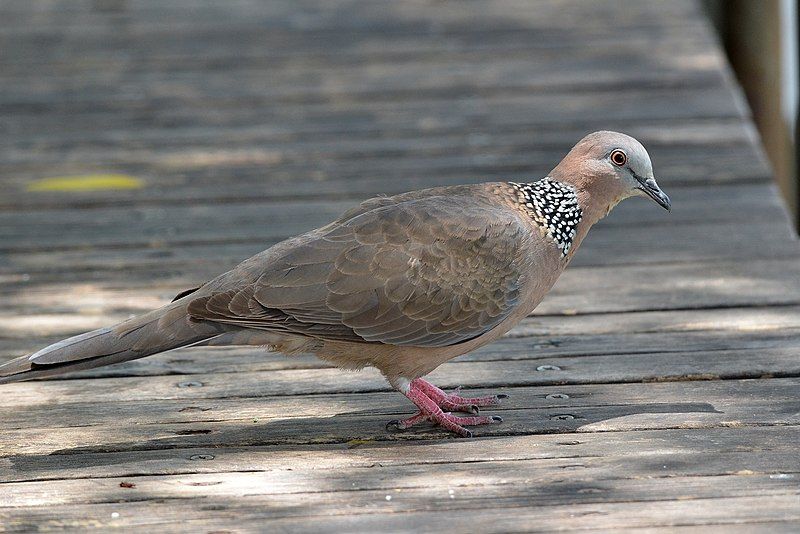
The spotted dove is a small, long-tailed species of pigeon that is native to the Indian subcontinent and Southeast Asia. It is a common resident breeding bird in these areas, and it has even been introduced to other parts of the world.
In some of these new locations, the species has managed to establish itself and form feral populations. The spotted dove is an attractive bird, with a distinctive spotted pattern on its wings and a pale blue-grey head.
Its body is a pinkish-brown color, and it has a long tail that is tipped with white feathers. It has a deep, cooing call, which often sounds like the “coo-coo-cooo” of a dove. The spotted dove is usually found in open woodlands, scrublands, and savannas.
It feeds mainly on seeds, and it will also eat some insects and fruit. It usually builds its nest in a tree or bush, and it will lay two white eggs, which are incubated by both parents. The spotted dove is a fairly common species, and its population is currently stable.
It is not considered to be threatened, and it is listed as a species of least concern by the International Union for Conservation of Nature.
| Kingdom | Animalia |
| Phylum | Chordata |
| Class | Aves |
| Order | Columbiformes |
| Family | Columbidae |
| Genus | Spilopelia |
| Species | S. chinensis |
3. White-Eared Brown Dove
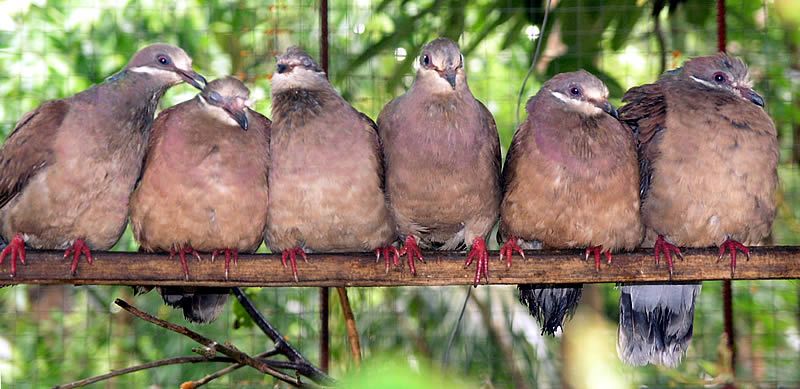
The white-eared brown dove is a species of bird that belongs to the Columbidae family. It is found only in the Philippines and is not found in any other parts of the world.
This species of bird is known to have a distinctive white ear patch and a brown body, which is why it has been given its name. It is usually found in the forests and woodlands of the Philippines, where it feeds on fruits and seeds.
In addition to this, the white-eared brown dove is also known to forage for insects and other food sources on the ground. The white-eared brown dove is a monogamous species, meaning that two birds form a lifelong pair.
They build their nest in the trees and the female lays two eggs, which are incubated for about 13 days. The chicks are cared for by both parents, and they fledge when they are about 21 days old.
This species of bird is a threatened species, as it is becoming increasingly rare due to hunting and habitat destruction. It is estimated that there are only about 1,000 white-eared brown doves left in the wild.
Efforts are being taken to protect the species and to ensure its long-term survival.
| Kingdom | Animalia |
| Phylum | Chordata |
| Class | Aves |
| Order | Columbiformes |
| Family | Columbidae |
| Genus | Phapitreron |
| Species | P. leucotis |
4. Philippine Hawk-Cuckoo
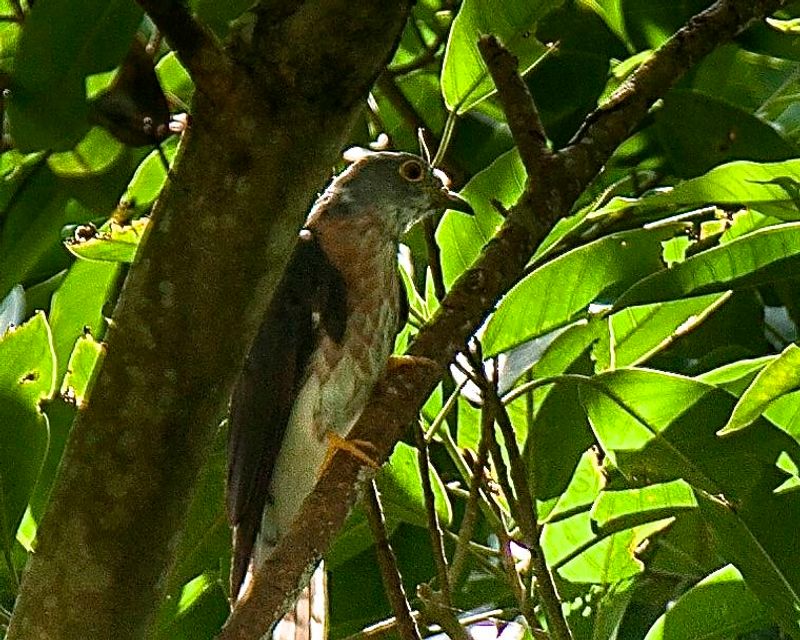
The Philippine hawk-cuckoo is a species of cuckoo that can only be found in the Philippines. It was once classified as a subspecies of Hodgson’s hawk-cuckoo, however, due to vocal differences, it is now recognized as a distinct species.
Its feathers are predominantly grey with some white and brown patches. Its tail is long and barred with black and white. Its call is loud and has a series of short notes that make it distinct from other species. They inhabit lowlands, mangroves, and secondary forests.
They feed mainly on insects and small reptiles. They are not considered to be endangered species, however, their population is declining due to habitat destruction.
| Kingdom | Animalia |
| Phylum | Chordata |
| Class | Aves |
| Order | Cuculiformes |
| Family | Cuculidae |
| Genus | Hierococcyx |
| Species | H. pectoralis |
5. Green Imperial Pigeon
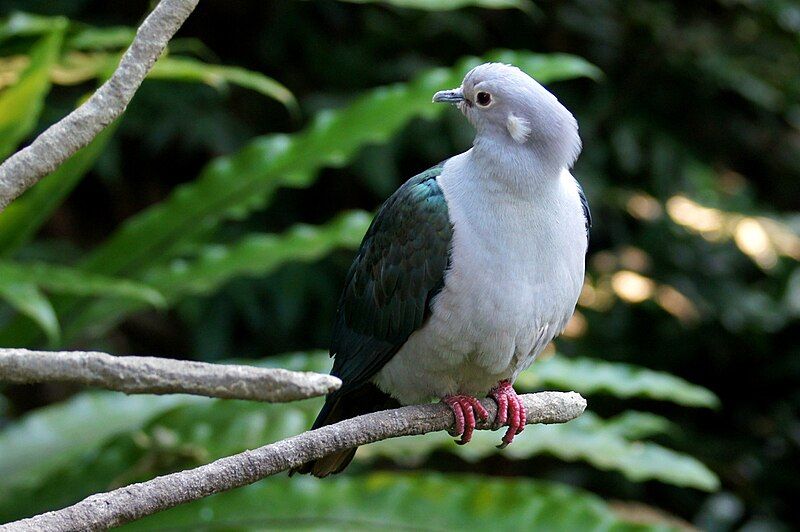
The Green Imperial Pigeon is a species of bird that is native to the forests of South Asia and Southeast Asia. It is a large and impressive bird, with a wingspan of up to 80 cm.
Its range extends from Nepal, in the west, to Southern India and Sri Lanka, and then eastwards to Southern China, Indonesia and the Philippines. The Green Imperial Pigeon is a common species in many parts of its range and is often found in small flocks in the forest canopy.
It feeds mainly on fruits and berries, which it collects from the trees and shrubs. The species is also known to feed on seeds, nuts and invertebrates. It nests in tree cavities, often near the ground, and lays two white eggs.
The Green Imperial Pigeon is a protected species, and its population is generally stable.
| Kingdom | Animalia |
| Phylum | Chordata |
| Class | Aves |
| Order | Columbiformes |
| Family | Columbidae |
| Genus | Ducula |
| Species | D. aenea |
6. Blue-Breasted Quail
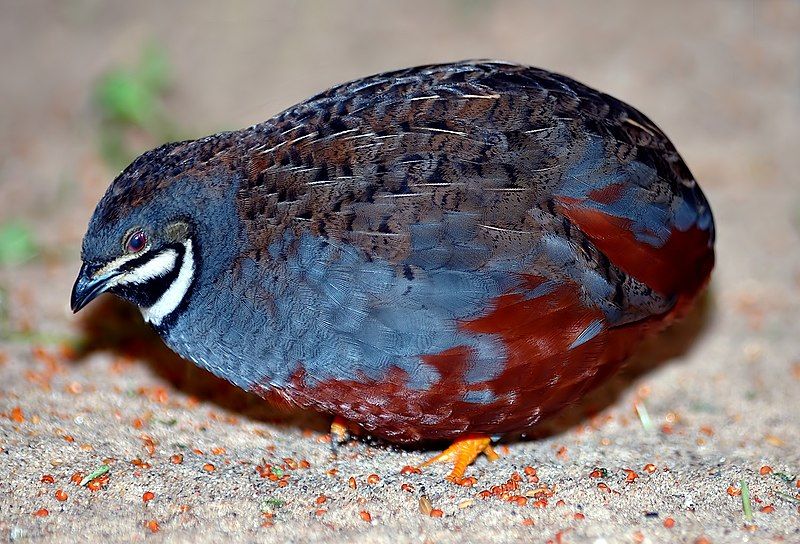
The king quail, scientifically known as Coturnix chinensis, is a species of Old World quail in the family Phasianidae. It is also known by various other local names, such as blue-breasted quail, Asian blue quail, Chinese painted quail, or Chung-Chi.
It is a small, ground-dwelling bird, native to East Asia, ranging from Japan, China, and the Himalayas. The king quail is a small bird, with a grayish-brown body and white spots on its neck and back.
It has a distinctive blue-breasted patch on its chest, which is what gives it the name of blue-breasted quail. The male is usually more brightly colored than the female, with a colorful head and chest.
This species also has a long tail with white feathers at the end. The king quail is mainly a seed eater, but it also eats other insects and small animals. It lives in grassy areas, such as meadows and fields, and is usually seen in small flocks.
They are very sociable birds, and they communicate with each other through a variety of calls. The king quail is a popular aviary bird and is kept as a pet in many countries. It is also a popular game bird in some parts of Asia and is hunted for its meat.
This species is kept in captivity for various reasons, including its beauty, its singing ability, and its ability to lay eggs.
| Kingdom | Animalia |
| Phylum | Chordata |
| Class | Aves |
| Order | Galliformes |
| Family | Phasianidae |
| Genus | Synoicus |
| Species | S. chinensis |
7. Wandering Whistling Duck
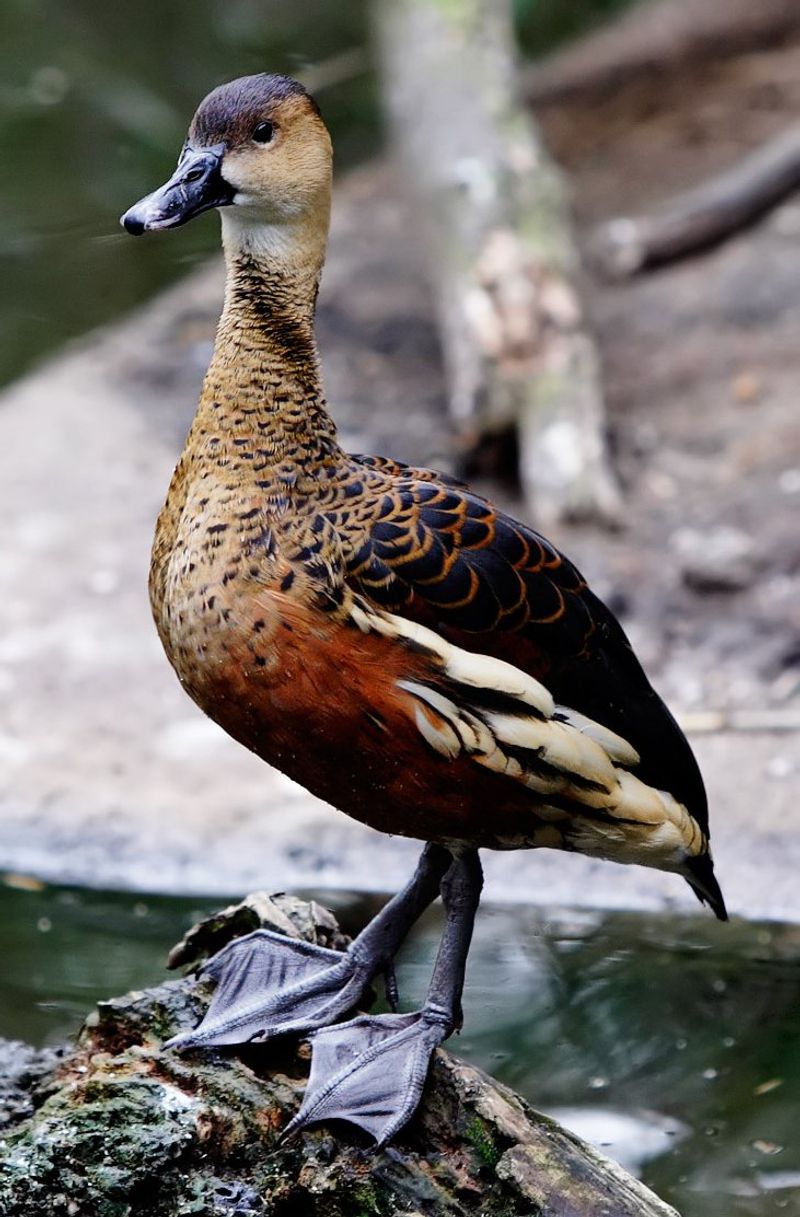
The Wandering Whistling Duck is a species of whistling duck that is found in many tropical and subtropical parts of the world. They inhabit Australia, the Philippines, Borneo, Indonesia, Papua New Guinea, and the Pacific Islands.
This species of duck is distinguished by its unique whistling sound, which it uses to communicate with other members of its species. The Wandering Whistling Duck is a waterfowl that is well-adapted to life in tropical and subtropical climates.
Its plumage is mainly brown with black and white markings, and it has a long, pointed bill. The Wandering Whistling Duck is a social species and can often be seen in flocks of up to 20 birds. The Wandering Whistling Duck feeds mainly on aquatic plants, seeds, and invertebrates.
They are also known to consume small fish, amphibians, and crustaceans. They typically forage in shallow waters or along the banks of rivers and lakes. The Wandering Whistling Duck is an important species for the local ecosystems of the areas they inhabit.
They help to disperse the seeds of aquatic plants, which helps to maintain the delicate balance of life in the aquatic environment. They are also an important source of food for predators such as hawks, owls, and eagles.
Overall, the Wandering Whistling Duck is an important species for its habitats. Its unique whistling sound and social behavior make it an interesting species to observe, and its importance to local ecosystems makes it a species worth protecting.
| Kingdom | Animalia |
| Phylum | Chordata |
| Class | Aves |
| Order | Anseriformes |
| Family | Anatidae |
| Genus | Dendrocygna |
| Species | D. arcuata |
8. Chestnut-Winged Cuckoo
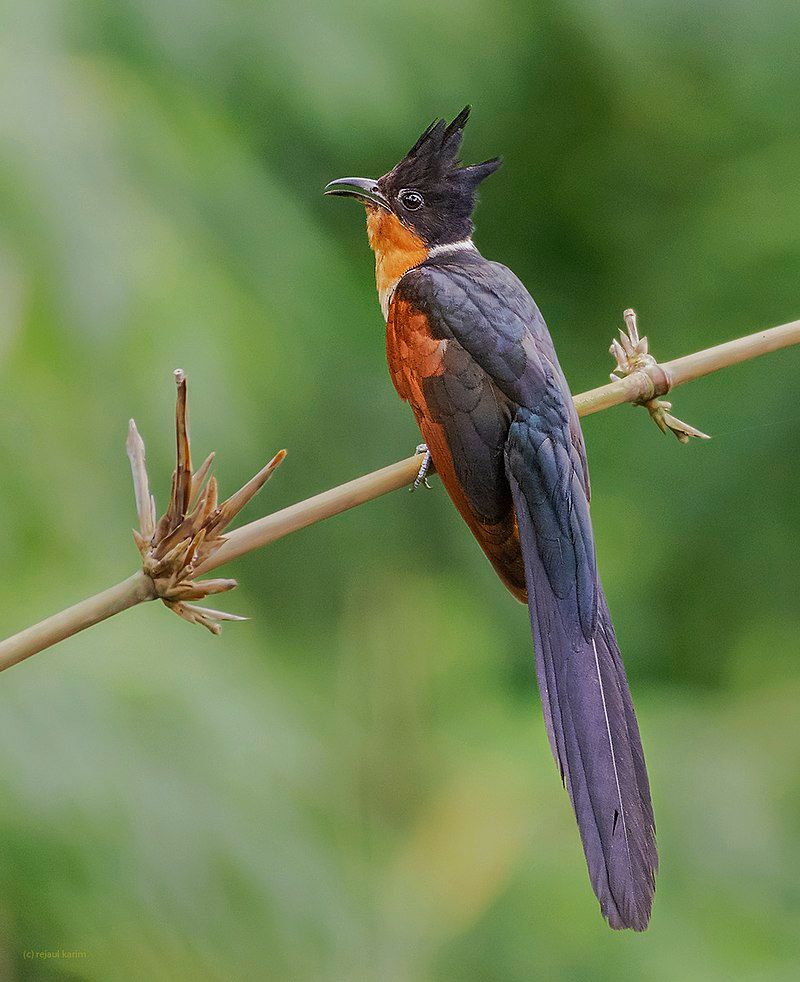
The chestnut-winged cuckoo is a species of cuckoo found in Southeast Asia and parts of South Asia. It is a medium-sized bird with a glossy black head and a long crest, as well as a long, graduated glossy black tail. The wings are chestnut-colored, and the throat is rufous.
The underside of the bird is dusky, and there is a narrow white nuchal half collar. The upperparts are glossy and dark. This striking bird is one of the most easily recognized cuckoos in Southeast Asia and South Asia, and it is an important part of the region’s birdlife.
| Kingdom | Animalia |
| Phylum | Chordata |
| Class | Aves |
| Order | Cuculiformes |
| Family | Cuculidae |
| Genus | Clamator |
| Species | C. coromandus |
9. Philippine Swiftlet
The Philippine swiftlet is a species of swiftbird found only in the Philippines. It is part of the Apodidae family, which includes many species of swifts and treeswifts.
This species of swift is found in a variety of habitats, including subtropical and tropical dry forests, subtropical and tropical moist lowland forests, and subtropical and tropical moist montane forests.
The dry forests are mostly located in the lowland regions of the Philippines, while the moist forests can be found in the lowland and montane regions.
These moist forests provide a great source of food and shelter for the Philippine swiftlet, enabling it to thrive in its natural environment.
| Kingdom | Animalia |
| Phylum | Chordata |
| Class | Aves |
| Clade | Strisores |
| Order | Apodiformes |
| Family | Apodidae |
| Genus | Aerodramus |
| Species | A. mearnsi |
10. Pink-Necked Green Pigeon
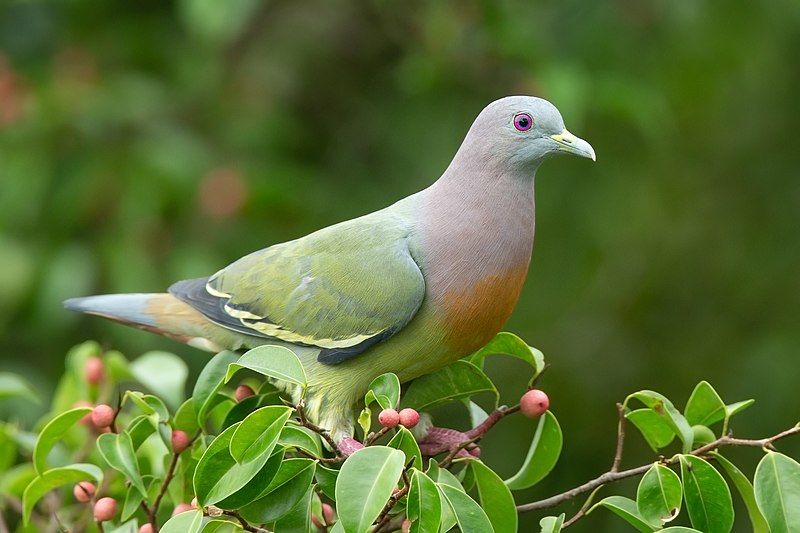
The pink-necked green pigeon is a species of bird belonging to the Columbidae family, which is made up of pigeons and doves. This species is a common sight in Southeast Asia and can be found in countries such as Myanmar, Vietnam, Indonesia and the Philippines.
It is widespread in these countries and is known to inhabit both woodlands and urban areas. The pink-necked green pigeon is easily recognisable due to its distinctive colouring. Its plumage is a vibrant green, and the area around its neck is a bright pink.
This species can also be identified by the white stripes that appear on its wings and its fan-shaped tail. This species is known to feed on a variety of plant material, such as fruits, buds and flowers, as well as insects.
They are also known to be quite sociable birds, often forming large flocks and gathering in communal roosts during the night. The pink-necked green pigeon is a species of bird that is important to the local ecology of Southeast Asia.
Its range is extensive and its population is considered to be stable, making it an important species for conservation efforts.
| Kingdom | Animalia |
| Phylum | Chordata |
| Class | Aves |
| Order | Columbiformes |
| Family | Columbidae |
| Genus | Treron |
| Species | T. vernans |
11. Pygmy Swiftlet
The Pygmy Swiftlet is a small species of swift, belonging to the family Apodidae. It is found only in the Philippines and is the smallest species of swift in the world. Its habitat is moist, low-lying forests, where it can be seen flying rapidly over the trees.
The Pygmy Swiftlet measures under 9 cm in length, and weighs just 5 grams – making it one of the smallest birds in the world. While it is small, it still displays the typical features of a swift, such as long, pointed wings and a streamlined body.
Its small size allows it to fly rapidly through the forest in search of insects to feed on.
| Kingdom | Animalia |
| Phylum | Chordata |
| Class | Aves |
| Clade | Strisores |
| Order | Apodiformes |
| Family | Apodidae |
| Genus | Collocalia |
| Species | C. troglodytes |
12. Red-Collared Dove
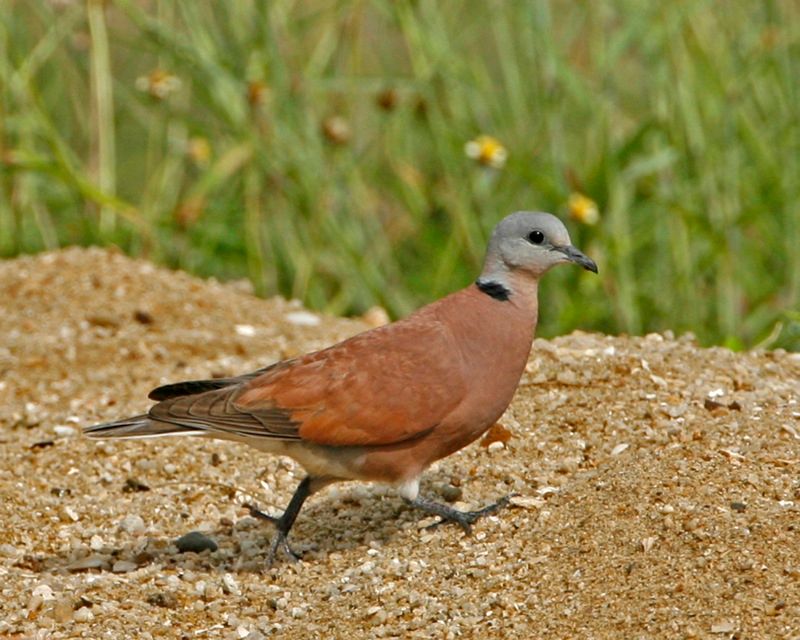
The red-collared dove is a small pigeon which is found in the tropical regions of Asia. It is also known as the red turtle dove. The male has beautiful plumage with a blue-grey head and a red-brown body.
The female is much plainer and has pale brown plumage which is similar to that of the larger Eurasian collared dove. The red-collared dove is a resident breeding bird in the tropics of Asia, meaning that it can be found locally and breeds in the same area.
This species has adapted well to the warm climate of the tropics and is well suited to the area. The red-collared dove is a popular species for bird lovers to watch and photograph, thanks to its striking plumage and unique behavior.
| Kingdom | Animalia |
| Phylum | Chordata |
| Class | Aves |
| Order | Columbiformes |
| Family | Columbidae |
| Genus | Streptopelia |
| Species | S. tranquebarica |
13. Ruddy-Breasted Crake
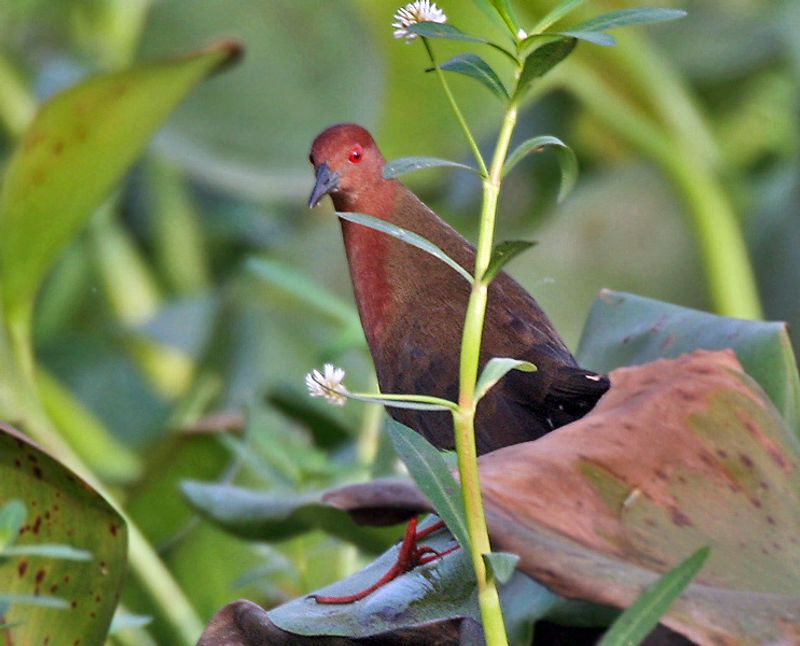
The Ruddy-breasted Crake, also known as the Ruddy Crake, is a member of the rail and crake family Rallidae. It is found in several countries across South Asia, ranging from the Indian subcontinent to Japan and Indonesia.
This species of bird prefers to inhabit wetland areas such as swamps and marshes. It is a medium-sized waterbird, with bright reddish-brown plumage on its chest and darker feathers elsewhere. The Ruddy-breasted Crake is a solitary bird, but can often be found in small groups.
It hunts for food during the day, foraging for small invertebrates, such as worms and snails, as well as seeds and insects.
During the breeding season, the Ruddy-breasted Crake is known to perform elaborate courtship displays. The Ruddy-breasted Crake is a resident species, meaning it does not undertake any seasonal migration.
It can be found in its breeding habitat throughout the year, although it may move to different areas within its range in search of food during different seasons.
Due to its preference for wetlands, the Ruddy-breasted Crake is particularly vulnerable to the effects of climate change and habitat destruction. As a result, its population is threatened in some areas and it is listed as a vulnerable species on the IUCN Red List.
| Kingdom | Animalia |
| Phylum | Chordata |
| Class | Aves |
| Order | Gruiformes |
| Family | Rallidae |
| Genus | Zapornia |
| Species | Z. fusca |
14. White-Breasted Waterhen
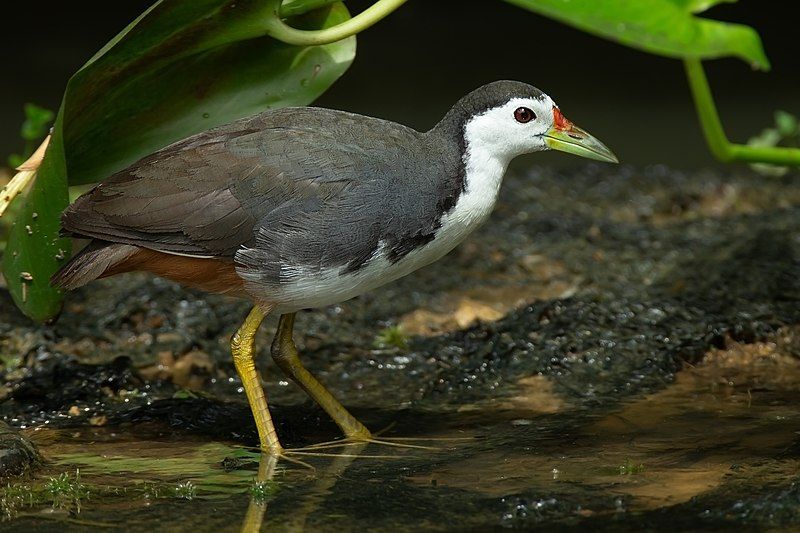
The white-breasted waterhen is a type of waterbird that belongs to the family Rallidae. It is found in many parts of South and Southeast Asia. These birds have a dark slate coloration, with a bright white face, chest, and abdomen.
They have long legs and a long, pointed beak, which they use to feed on prey such as insects, crustaceans, and small fish. Their feathers are dense, allowing them to stay warm in the water. They also have a large tail that helps them to steer when swimming.
In addition to their unique physical features, white-breasted waterhens also have distinct behaviors. They can be seen running along the shoreline, searching for food. They also like to perch on rocks or logs near the water’s edge.
They often form large groups and can be seen floating in the water, preening their feathers. White-breasted waterhens are an important part of the ecosystem in South and Southeast Asia. They help to keep aquatic habitats healthy by eating aquatic insects and crustaceans.
They also provide food for other animals, such as fish and birds of prey. These birds are also important for the tourism industry in the region, as they are an attractive species to observe.
| Kingdom | Animalia |
| Phylum | Chordata |
| Class | Aves |
| Order | Gruiformes |
| Family | Rallidae |
| Genus | Amaurornis |
| Species | A. phoenicurus |
15. White-Browed Crake
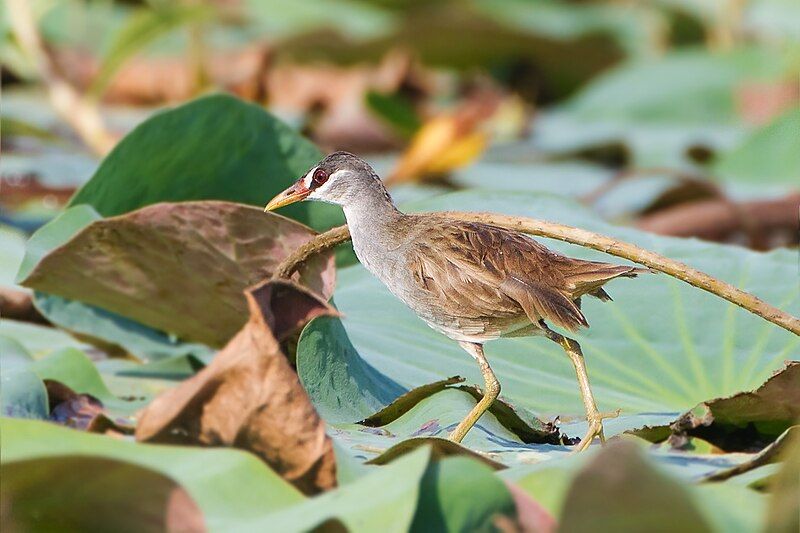
The white-browed crake is a species of bird belonging to the Rallidae family.
It is native to a variety of different countries in the Asia-Pacific region, including Australia, Brunei, Cambodia, Fiji, Hong Kong, Indonesia, Japan, India, Malaysia, Micronesia, New Caledonia, Palau, Papua New Guinea, the Philippines, Samoa, Singapore, Solomon Islands, Thailand, and Vanuatu.
This species of bird is distributed widely across the entire continent, and its habitats include a variety of different environments, from coastal and wetland areas to grasslands and woodlands. The white-browed crake has a distinctive appearance, with a white brow, a black head and neck, and a brown body.
Its eyes are a bright yellow, and its bill is yellowish-orange. The bird is typically found in pairs or small groups, and they feed on a variety of insects, snails, and small fish.
It is a shy and elusive species, and it usually skulks around in dense vegetation or under fallen logs. The white-browed crake is classified as a species of least concern by the International Union for Conservation of Nature and Natural Resources (IUCN).
This is because the species is widely distributed and its population appears to be stable. However, as with many species of birds, the white-browed crake is threatened by habitat loss and degradation due to human activities such as logging and agricultural expansion.
The species is also susceptible to predation from cats, dogs, and other birds of prey. To help protect this species from further decline, conservation efforts have been implemented in many of the countries where the white-browed crake is found.
These efforts include habitat protection, reforestation, and education campaigns to raise awareness of the importance of protecting the species.
| Kingdom | Animalia |
| Phylum | Chordata |
| Class | Aves |
| Order | Gruiformes |
| Family | Rallidae |
| Genus | Poliolimnas |
| Species | P. cinereus |
16. Red-Tailed Tropicbird
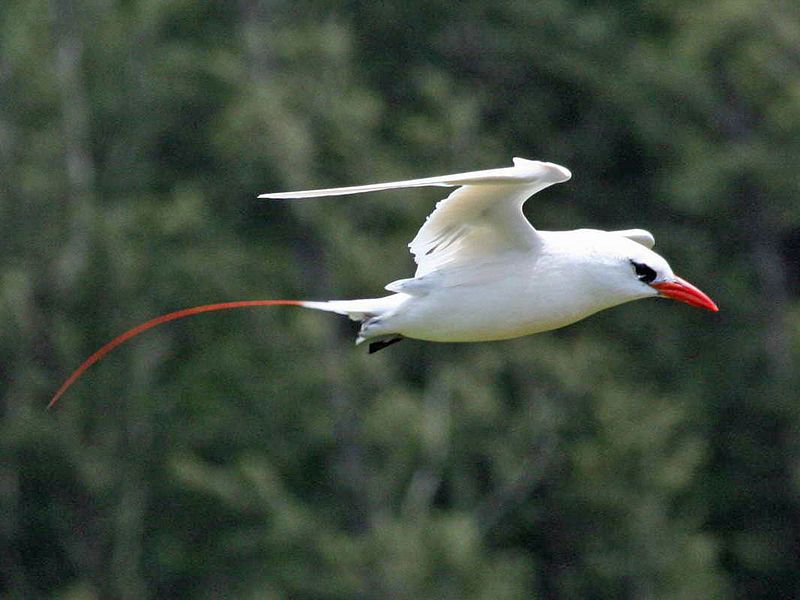
The red-tailed tropicbird is a species of seabird native to tropical parts of the Indian and Pacific Oceans. It is one of three closely related species of tropicbirds, and was first described by Pieter Boddaert in 1783.
It has distinctive appearance, with its mostly white plumage, black mask and red bill.
It has a similar look to that of a tern, although it is slightly larger. The red-tailed tropicbird is a unique species and is easily distinguishable from other birds due its eye-catching plumage.
The white feathers of the bird are accented by a black mask around its eyes and a red bill. The bright colors of the bird make it stand out amongst other species of birds. The red-tailed tropicbird can be found in tropical parts of both the Indian and Pacific Oceans.
It is a bird that prefers to live near coastal areas, as it feeds mainly on fish and other small sea creatures.
Its wings are specially adapted for long-distance travel and it is known to migrate across wide stretches of ocean. The red-tailed tropicbird is a unique species and an important part of the tropical ocean ecosystem.
Its distinctive appearance and long-distance migrations make it an interesting and important bird to study.
| Kingdom | Animalia |
| Phylum | Chordata |
| Class | Aves |
| Order | Phaethontiformes |
| Family | Phaethontidae |
| Genus | Phaethon |
| Species | P. rubricauda |
17. Pheasant-Tailed Jacana
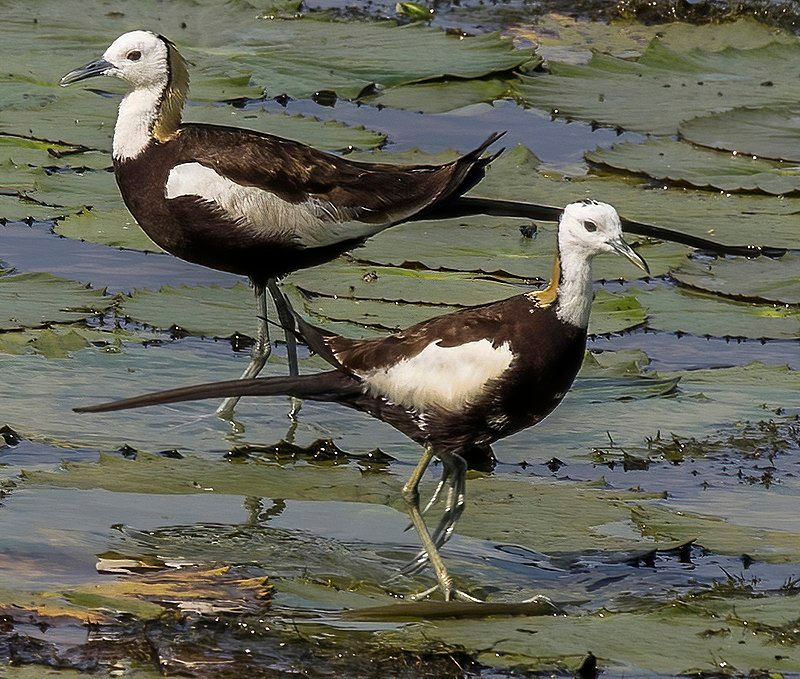
The pheasant-tailed jacana is a unique species of bird belonging to the genus Hydrophasianus. It is the only species in its genus, making it a monotypic one.
These birds are known for their distinctive elongated toes and nails which give them the ability to walk on the floating vegetation found in shallow lakes, their primary habitat. This type of adaptation allows them to scavenge for food in these conditions.
Jacanas are wading birds found in tropical and subtropical regions of the world. They are known for their bright, colorful plumage and long tails. They are omnivores, which means they feed on a variety of plants and animals.
Due to their light body weight, these birds can easily walk on lilies and other floating vegetation that grows in shallow waters. By doing so, they can access food sources that are otherwise unavailable to other waterfowl.
The pheasant-tailed jacana is a medium-sized bird, usually measuring about 30 cm in length. Its body is mostly black with white and chestnut markings on its wings and head. It has a long tail that has long, pheasant-like feathers.
Its feet and legs are yellow in color, and its long toes and nails make it well-adapted to walking on floating vegetation. The pheasant-tailed jacana is found in shallow freshwater lakes, marshes and other wetlands.
It prefers to feed on aquatic insects, small fish, mollusks and other invertebrates. It also eats some plant material, including seeds, leaves and stems.
In conclusion, the pheasant-tailed jacana is a unique species of bird that is adapted to living in shallow lakes and wetlands. Its elongated toes and nails enable it to walk on floating vegetation, and it feeds on a variety of plants and animals.
| Kingdom | Animalia |
| Phylum | Chordata |
| Class | Aves |
| Order | Charadriiformes |
| Family | Jacanidae |
| Genus | Hydrophasianus |
| Species | H. chirurgus |
18. Black-Winged Stilt
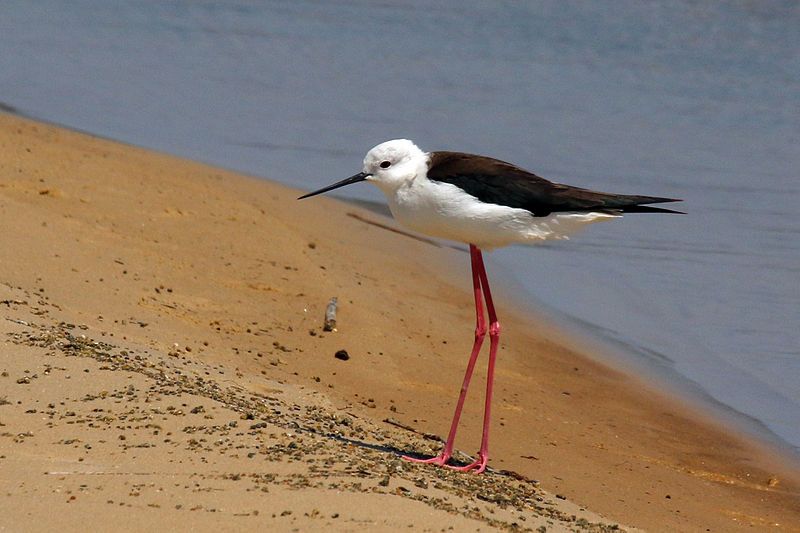
The black-winged stilt is a species of wader, a type of bird found in the avocet and stilt family. It is found in many different areas around the world and is known for its very long legs.
Its scientific name is H. himantopus, and the species is often considered to be almost cosmopolitan, meaning that it can be found in many different regions. This makes the black-winged stilt a fairly common species, and one that can be found in a variety of habitats.
The black-winged stilt is a very adaptable bird, able to live in a variety of environments ranging from wetlands to grasslands. The species feeds mainly on small invertebrates such as insects, crustaceans, and molluscs.
It has also been known to feed on the eggs of other birds and small fish. The black-winged stilt is a fairly territorial species, with males and females often defending their own areas. The species is also known to be monogamous, with pairs often staying together for life.
The black-winged stilt is a beautiful bird, with a white head, black wings, and reddish-brown back. It’s long legs and long beak make it an impressive sight when it is wading through water or perched on a branch.
| Kingdom | Animalia |
| Phylum | Chordata |
| Class | Aves |
| Order | Charadriiformes |
| Family | Recurvirostridae |
| Genus | Himantopus |
| Species | H. himantopus |
19. Greater Painted-Snipe
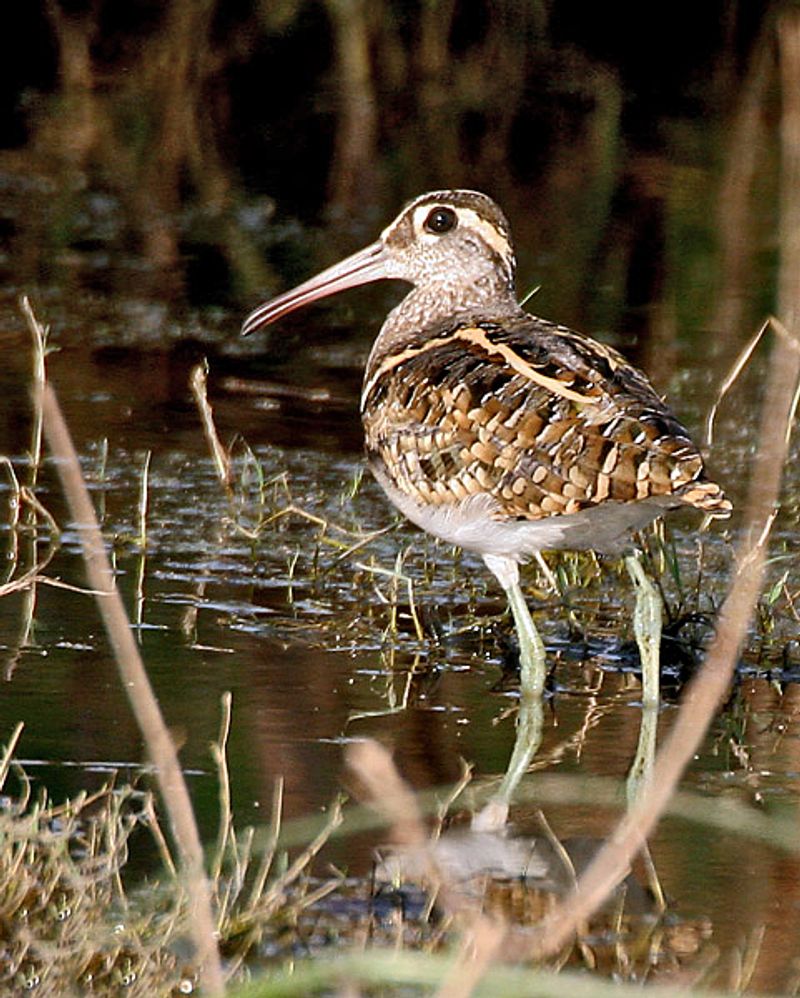
The greater painted-snipe is a species of wader bird belonging to the family Rostratulidae. It is found in wetlands and marshes in the African continent, as well as in South Asia and Southeast Asia.
This species of wader is typically found in shallow and reedy marshes, as well as near lakes and ponds. The greater painted snipe is a medium-sized wader, measuring around 24-27 cm in length and weighing up to 130 grams. It has a stocky body and a short, straight bill.
Its plumage is grey and brown, with white spots and barring on the wings and tail. The male has a distinctive red patch on the head and neck. The greater painted-snipe feeds mainly on small invertebrates, such as snails, worms, crustaceans, and insects.
It also consumes plant material, such as seeds and leaves. It forages by probing with its bill in mud and shallow water. The greater painted snipe is a solitary species and is rarely seen in flocks. It is a secretive species and is often overlooked due to its camouflage.
It is also known to be a fairly quiet bird, only producing a few low-pitched grunts and croaks. The breeding season of the greater painted snipe varies depending on the location but generally occurs during the wet season.
The male will perform a courtship display, involving running and displaying its wings. The nest is a shallow scrape in the ground, usually hidden in vegetation. The female will lay two to four eggs, which are incubated by both the male and female.
The chicks are precocial, meaning they are able to leave the nest shortly after hatching.
| Kingdom | Animalia |
| Phylum | Chordata |
| Class | Aves |
| Order | Charadriiformes |
| Family | Rostratulidae |
| Genus | Rostratula |
| Species | R. benghalensis |
20. Spotted Imperial Pigeon
The Spotted Imperial Pigeon, also known as the Grey-necked Imperial Pigeon, is a species of bird that belongs to the Columbidae family. It is native to the Philippine Islands and lives mainly in forests and forest edges.
It has been observed going down to the limestone shorelines, likely due to feeding habits. Unfortunately, this species is considered vulnerable and is threatened by habitat destruction and hunting. Habitat loss has been particularly detrimental to the Spotted Imperial Pigeon.
As forests are cleared for development, their natural habitats are disappearing. This has caused a decrease in the bird’s population and has caused a decline in their numbers. Furthermore, hunting has become a major issue for this species.
Despite the fact that hunting is illegal in the Philippines, the Spotted Imperial Pigeon is still being hunted for food and sport. These two threats have put the Spotted Imperial Pigeon on the endangered species list.
Conservationists are working hard to protect the species by trying to stop hunting and habitat destruction. They are also working to create safe habitats for the species to live in and breed.
With the help of conservation efforts, the Spotted Imperial Pigeon may be able to recover in the future.
| Kingdom | Animalia |
| Phylum | Chordata |
| Class | Aves |
| Order | Columbiformes |
| Family | Columbidae |
| Genus | Ducula |
| Species | D. carola |
21. Large Hawk-Cuckoo
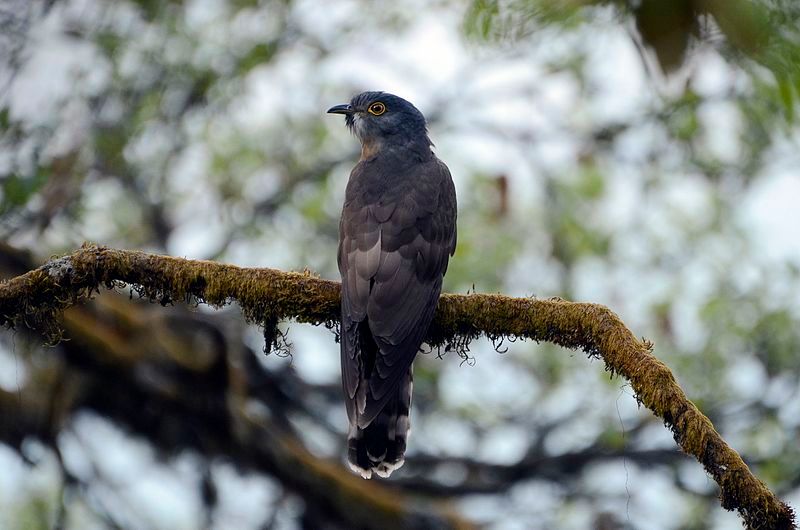
The large hawk-cuckoo is a species of bird found in the family Cuculidae. It is native to temperate regions of Asia and can be found along the Himalayas and extending eastward.
It breeds in these regions during the summer months, but many of the populations migrate southward during the winter. This species of cuckoo is known for its distinctive call and its large size, making it easy to spot in its natural habitat.
Its wingspan can reach up to 20 inches and its body length can reach up to 15 inches. It feeds on insects, small rodents, and other small animals, and its diet can vary depending on the region in which it resides.
The large hawk-cuckoo is an important species to its environment, as it helps to keep the insect population in check and also serves as an important food source for many other species of birds and animals.
| Kingdom | Animalia |
| Phylum | Chordata |
| Class | Aves |
| Order | Cuculiformes |
| Family | Cuculidae |
| Genus | Hierococcyx |
| Species | H. sparverioides |
22. Spot-Billed Pelican
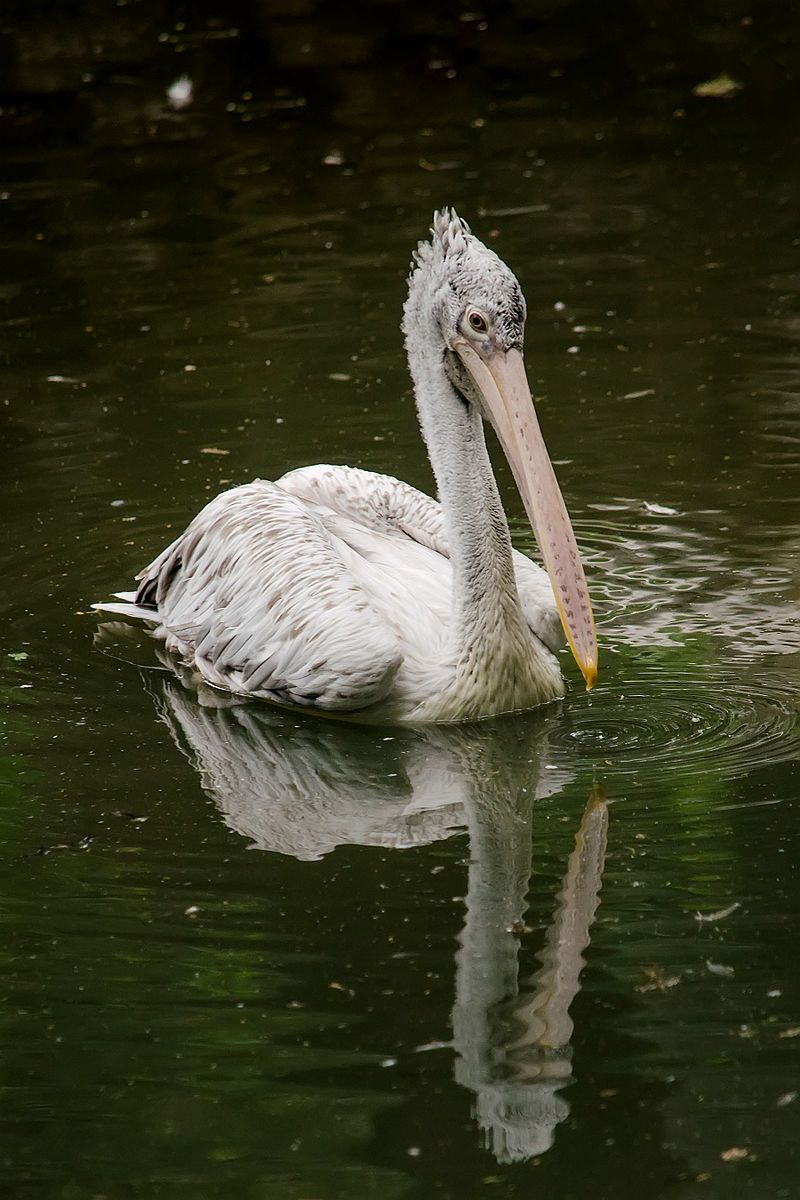
The spot-billed pelican, also known as the gray pelican, is a type of bird belonging to the pelican family. It is native to the southern parts of Asia, from Iran to Indonesia, but it can often be found in other areas.
It prefers to live in large lakes and coastal waters, where it can take advantage of abundant food sources. The spot-billed pelican is a fairly large bird, with a wingspan of up to 1.8 meters. Its feathers are mainly white, with black and gray markings.
It has a long, curved beak, which is its most distinguishing feature. This beak is yellow in color, with black spots, which give the bird its name. The spot-billed pelican is a carnivorous bird, and its diet consists mainly of fish.
It uses its long beak to scoop up fish from the water and swallow them whole. It is also known to hunt in groups, which allows them to catch more fish at once. The spot-billed pelican breeds in the spring months, usually between March and May.
It nests in large colonies, occasionally up to a thousand birds. These colonies are often located near large bodies of water, which provide an abundant source of food for the birds. The spot-billed pelican is an important part of the ecosystems in which it lives.
It helps to keep the population of fish in check and thus helps to maintain a healthy balance in the environment. It is also a popular species among birdwatchers, as its distinctive beak makes it easy to spot in its natural habitat.
| Kingdom | Animalia |
| Phylum | Chordata |
| Class | Aves |
| Order | Pelecaniformes |
| Family | Pelecanidae |
| Genus | Pelecanus |
| Species | P. philippensis |
23. Bulwer’s Petrel
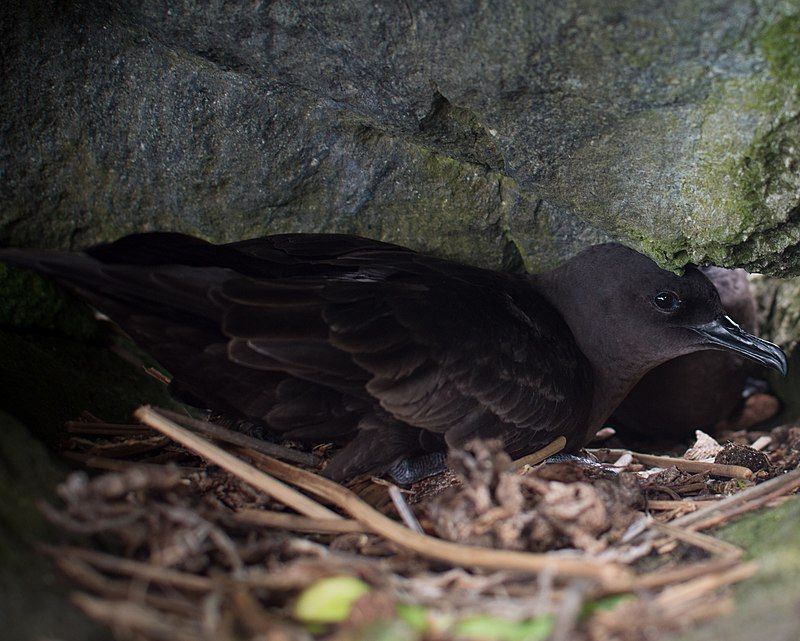
The Bulwer’s petrel is a small and unique bird species that belongs to the family Procellariidae. They are found in tropical and subtropical regions of the Atlantic, Indian, and Pacific Oceans, living in both coastal and open sea habitats.
It is named after the English naturalist, James Bulwer, who was well known for his work on the study and conservation of marine birds. The Bulwer’s petrel typically has a dark grey-brown body, with white underneath.
They have a wingspan that can reach up to 40 inches and their average size is 7.5 inches in length. They have long and pointed wings, with a long tail and a short beak.
These birds are usually seen in pairs or small groups, and they can often be seen flying high above the water in search of food. Bulwer’s petrels are mainly nocturnal feeders, and they eat a variety of small fish, squid and crustaceans.
They are also known to eat oil slicks, and will often follow ships in search of food.
During the day, they will rest on the water or on the sea surface, and they are known to migrate long distances in search of food. Bulwer petrels are threatened by human activities such as fishing, oil spills, and pollution.
They are also at risk from habitat destruction and climate change. Conservation efforts are underway to protect this species, and they are listed as a species of least concern by the IUCN Red List.
| Kingdom | Animalia |
| Phylum | Chordata |
| Class | Aves |
| Order | Procellariiformes |
| Family | Procellariidae |
| Genus | Bulweria |
| Species | B. bulwerii |
24. White-Tailed Tropicbird
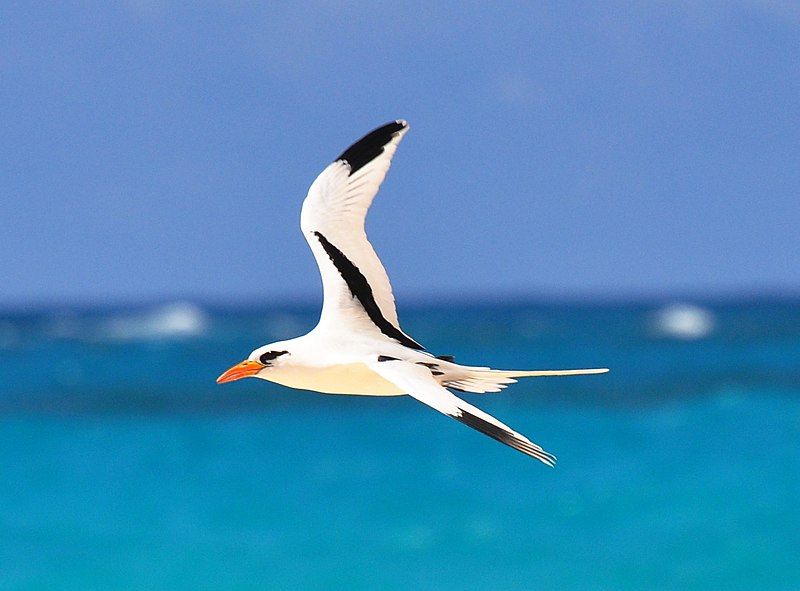
The white-tailed tropicbird is a species of seabird that is found in tropical regions of the Atlantic, western Pacific, and Indian Oceans. It belongs to the order Phaethontiformes, making it the smallest member of this group.
It is also the smallest of the three closely related species of tropicbirds in the tropical oceans. The white-tailed tropicbird has a slender, white body with a long, forked tail and a distinct black mask across its eyes.
Its wings are long and pointed, and its legs are short and weak. It is able to fly for long distances, often soaring high up in the sky.
On land, it uses its short legs to hop from rock to rock. The white-tailed tropicbird feeds mostly on fish, squid, and crustaceans, which it hunts by diving from the air. It is able to dive up to a depth of 30 meters and can even stay underwater for up to 10 seconds.
It will also scavenge for food, and will often follow fishing boats in order to take advantage of scraps. The white-tailed tropicbird breeds on tropical islands and is known to form large colonies.
It makes its nest from a variety of materials, including sticks, leaves, and feathers, which it builds in trees or on the ground. The female lays a single egg, which is incubated by both parents.
The chicks are usually ready to fledge after two months. Overall, the white-tailed tropicbird is an impressive species of seabird that is well adapted to its tropical oceanic home.
It is a graceful and agile flyer, and its unique mask and long, forked tail make it easy to identify. It is a vital part of the marine food web, and its presence is essential for the maintenance of healthy ocean ecosystems.
| Kingdom | Animalia |
| Phylum | Chordata |
| Class | Aves |
| Order | Phaethontiformes |
| Family | Phaethontidae |
| Genus | Phaethon |
| Species | P. lepturus |
Conclusion
Birds in Albay are some of the most beautiful and diverse species of birds in the world. These species can be found in many different habitats, ranging from coastal wetlands to the mountains.
They are also a source of food and entertainment for many people in the province. By protecting and conserving these birds, we can ensure their continued presence and enjoyment for future generations.